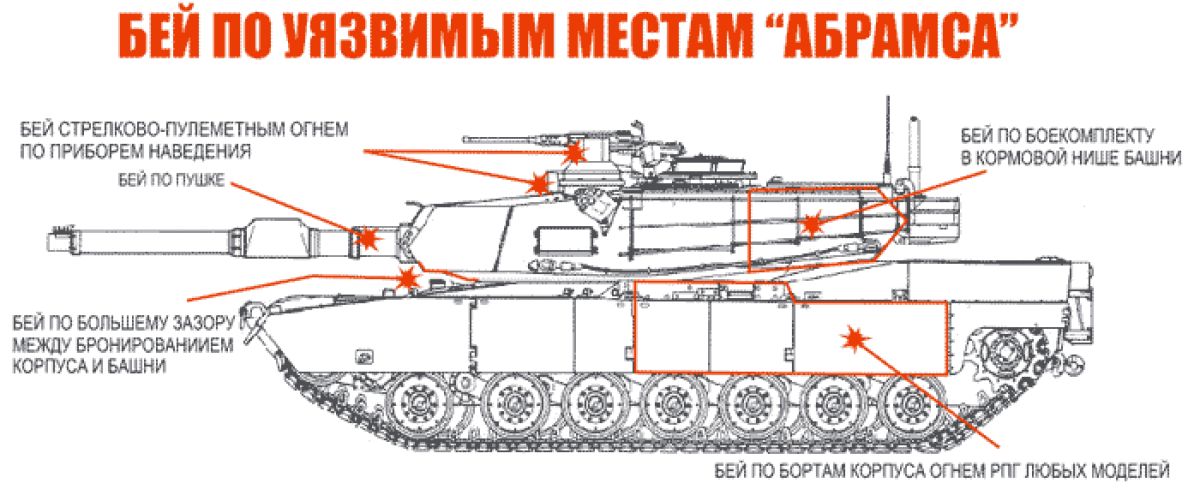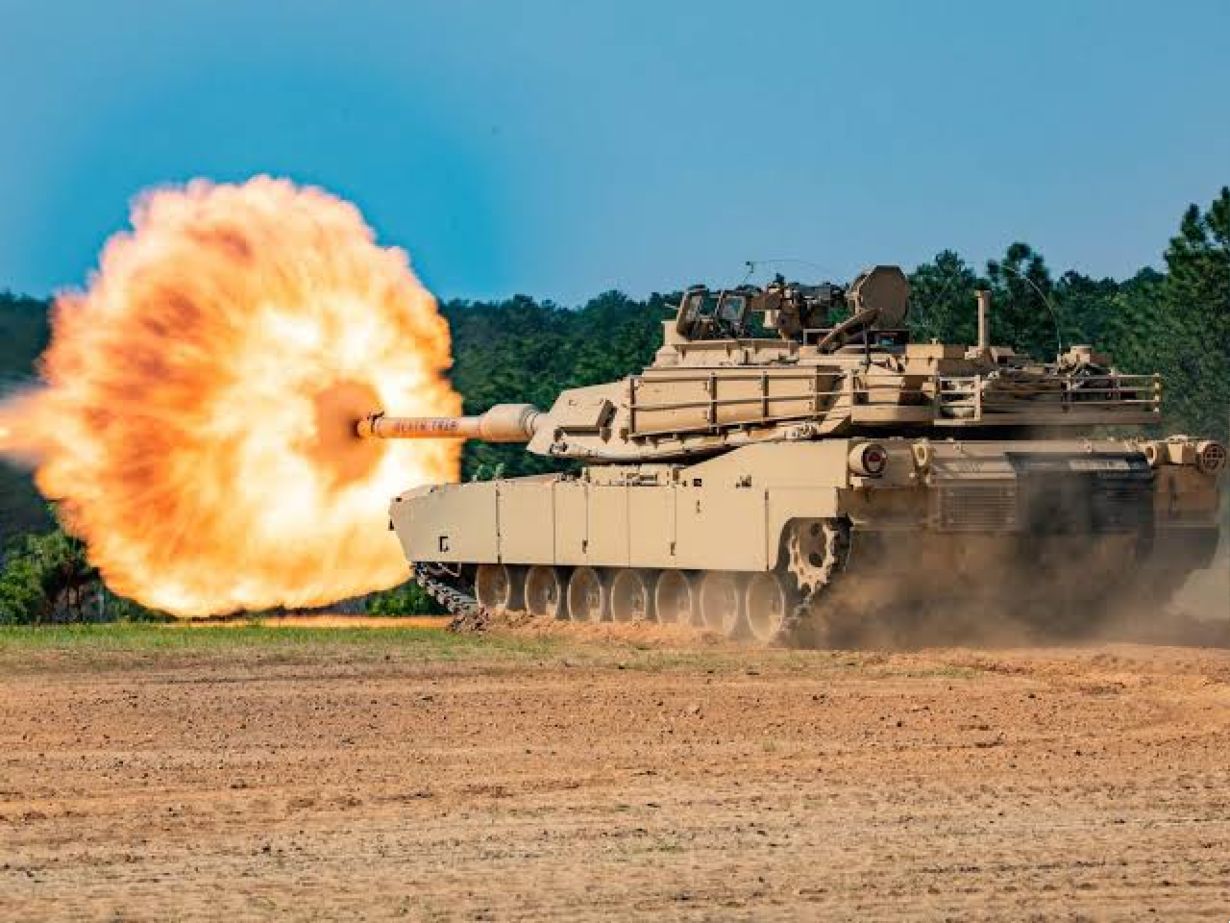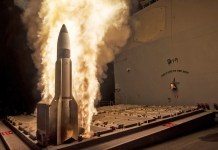With the Ukraine war continuing unabated, the Pentagon formally stated on May 15 that 31 Abrams tanks had been shipped from the United States to Germany to train the Ukrainian military.
‘Bombing The Hell Out’ Of Ukraine, Russia Creates An Elite Aviation Unit With Sukhoi Fighters For The Mission
The arrival of Abrams Main Battle Tanks (MBTs) promised by the US is a little ahead of schedule, as charted at the Ukraine Defense Contact Group meeting at Ramstein Air Base held last month. When the Ukrainian troops finish training on the M1A1 Abrams, the tanks developed to Ukrainian specifications will be ready for shipment.
The Abrams’ delivery schedule means they might not be able to participate in the much-anticipated Ukrainian counteroffensive in the coming days or weeks. However, with the war seeing no signs of waning, the tanks could eventually see action.
The news about combat-hardened M1A1 Abrams coming to Ukraine rattled the Russians to the point that Russian companies came up with reward money to encourage troops to annihilate these US battle tanks.
For instance, the famous Russian actor and director Ivan Okhlobystin announced that Russian soldiers who destroy these tanks would be given $10 million as a reward by major Russian industries.
Not just that, in February 2023, a pro-Russian published a video detailing the vulnerabilities of the Abrams tanks and offering a catalog to Russian troops on ways in which they could destroy the US-supplied MBTs in Ukraine.

The Abrams tanks are generally known as the “hard to kill” war machine as they are equipped with advanced composite armor, which offers an effective defense against hostile fire.
Fuel and ammunition are kept separately inside the tank to protect the crew from the munitions exploding if the tank is damaged.
With the integrated computerized fire control system of the Abrams, the gunner can engage targets by just “pointing and shooting.”
Thanks to this capability and a potent sensor array, the Abrams can engage targets at considerable range day or night, even in inclement weather. In addition, these tanks feature 120mm main guns, although they have different armor, sensor, communications, and other equipment set-ups.
Earlier, a Russian military expert Ruslan Pukhov asserted that the M1 tank outperforms all of Russia’s serial-production tanks. Pukhov told the media that the ammunition now employed by the Russian tanks consists primarily of outdated Soviet shells capable of dispatching the Ukrainian T-64, T-72, and T-80 at quite close ranges.
On the other hand, Western tanks with powerful guns, modern armor-piercing shells, and fire control systems can lead to a sharp increase in the distances of tank battles. In such a scenario, the Russian military might be disadvantaged.
On its part, Russia has repeatedly derided these claims and asserted that the Russian tank troops would ace any tank battles against the Western tanks. However, several years ago, the US M1A1 Abrams wreaked havoc on Russian MBTs in a tank battle that is remembered today as one of the most notable in contemporary history.
When Abrams Annihilated Russian Tanks In Iraq
Until Operation Desert Storm in the Persian Gulf War in 1991, the Abrams had never been used in a battle.

On February 26, 1991, the US Army dispatched 120 infantrymen, 12 M3A2 Bradley fighting vehicles, and nine M1A1 Abrams tanks to conduct reconnaissance operations on the frontlines, albeit without engaging in combat with the enemy units. The formation was supposed to advance 67 kilometers east along the center line of the coalition forces.
Captain HR McMaster was at the command of this American combat unit, with ground forces usually supported from the air, especially by the A-10s and combat helicopters. However, an unexpected sandstorm curtailed air operations on that inopportune day.
The troops commanded by McMaster accidentally went far north of a road parallel to their advance, stretching from east to west. That road led straight into an Iraqi military training facility occupied by a brigade of the Tawakalna Division of Iraq with elements of the 10th Armored Division.
The Iraqi troops dug in for a fight after receiving orders to stop the American advance. Commanding the Iraqi armored divisions, Major Mohammad fortified their positions by equipping the village behind them with ZSU-23-4 “Shilka” radar-guided anti-aircraft weapon systems, aiming their four enormous 23mm autocannons parallel to the horizon to destroy land-based armor.
With hundreds of infantry soldiers dispersed among them in bunkers and hastily made trenches, he positioned scores of tanks and BMPs throughout the defensive position.
The idea was to turn the village into a fortress of defensive strength, forcing the advancing American armor to disperse to the north and south of the town, where he had planted mines to halt their progress and positioned heavy firepower to obliterate the Abrams and Bradleys once they were stopped.
Then, he set up an additional 18 T-72 main battle tanks in a circle about three thousand meters farther to the east so that they could retaliate rapidly in case the Americans managed to breach his defenses.

Typically, navigating the desert requires following roads to prevent getting lost. Hence, the Iraqi Commander positioned his defenses to face the road, ruling out any possibility of American tanks rolling via the desert route.
However, the advanced American Abrams and Bradleys were outfitted with cutting-edge global positioning systems allowing them to travel the Iraqi desert freely.
While Iraqi defenses were facing the roads, the American troops came from a few kilometers away from the north, carrying an “element of surprise.”
Using their infrared sight, 13 US Bradley vehicles led the way into the raging sandstorm, closely followed by McMaster’s nine Abram vehicles. The US troops continued until they noticed three tanks and two Iraqi BMPs scouting their location.

One of the Bradleys stopped in place and fired a BGM-71 TOW missile, hitting the southernmost tank before the Iraqi armor could respond. The second TOW missile fired by the same Bradley hit the second tank within seconds, plowing into the third tank with its 25mm M242 Bushmaster chain gun.
Iraqi forces hiding in a small cluster of isolated buildings to the southeast opened fire on the US troops. Reacting almost instantly, McMaster quickly examined the buildings and ordered all nine Abrams to open fire on the buildings with their powerful 120mm smoothbore guns, putting an immediate end to the small weapons fire coming from that direction.
They observed in the distance as the T-72’s turret detached from the tank like a jack-in-the-box, a scene familiar in today’s battle in Ukraine. By this time, four T-72s and two BMPs were smoldering.

Russian T-72 tanks can carry up to 40 shells in a circle where the turret meets the tank body, in contrast to the Abrams, which stores ammo for its main gun in a rear compartment of the turret. Any damage to this part of the tank may set off a series of events that would cause all the rounds to explode and blow the turret off the tank.
When orders came in for US troops to go even further to 70 Easting, the 13 Bradleys stalled, and McMaster’s nine Abrams advanced in a wedge formation.
Soon after, McMaster saw the first set-up of Major Mohammed’s trap: five tanks lined up next to each other, with three more waiting in reserve to the north of them. He received a reading of 1,420 yards from the laser range finder in McMaster’s Abrams.
He ordered to fire a depleted uranium, fin-stabilized, 41-pound M829A1 armor-piercing sabot round, specifically made to destroy enemy armor. At over 3,500 miles per hour, it struck the first Iraqi tank. Three seconds later, McMaster’s Abrams fired another sabot round, destroying a second T-72.
As the nine Abrams approached the top of a small slope, the remaining six tanks simultaneously opened fire, pouring 125mm tank rounds down on US troops. McMaster could see his troops were now under fire and severely outnumbered despite being told not to engage in a decisive engagement.
The US tanks and armored vehicles moved forward aggressively as explosives continued to rain down over them. When they arrived at the opposing lines, the US troops had already destroyed 15 T-72s. ZSU-23-4 anti-aircraft system started shooting, but one of the Bradleys swiftly silenced them with a TOW missile. Other Bradleys attacked the infantry positions.
The Iraqi forces continued to strike US troops, but the bullets ricocheted off the armor even when the T-72s’ 125mm smoothbore main guns made direct hits on the Abrams’ Chobham composite armored fronts. They were so close to one another that it was much simpler to target them, and US tanks quickly annihilated the entire formation.
They destroyed 34 Iraqi armored vehicles and 47 tanks, all without suffering any personal injury or damage to their equipment. This quickly became Abrams’ most decisive and iconic victory, coupled with their comrade Bradleys.
However, these tanks have never had a tank duel against Russia’s forces. Russia’s old Soviet-era tanks have been upgraded, and more advanced battle tanks have been produced and fielded against Ukraine. Moreover, Russia’s battlefield tactics and strategies have evolved, strengthening its fortifications.
Both sides are geared to defeat the other, and a tank battle between the Russian and American Abrams is never off the table.
- Contact the author at sakshi.tiwari9555 (at) gmail.com
- Follow EurAsian Times on Google News





